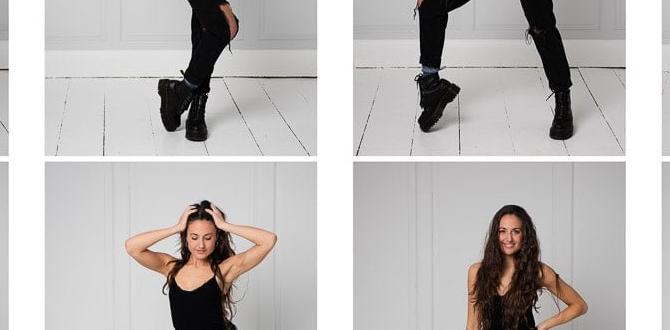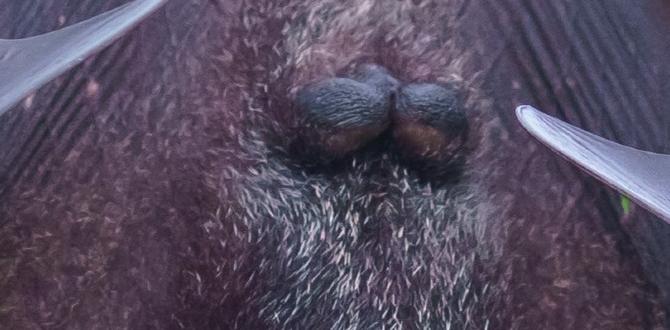Force3 Catcher’s Throat Guard Sizing: Essential Guide
Choosing the right Force3 catcher’s throat guard size is crucial for safety and comfort. This guide will help you find the perfect fit, ensuring maximum protection behind the plate. Get it right, and focus on your game!
Hey there, baseball family! John P. Miller here from FriskMode. We all know how important it is to feel secure and comfortable behind the plate, especially when you’re calling the shots and dodging pitches. One piece of gear that’s often overlooked but vital for your safety is the catcher’s throat guard. Specifically, we’re diving deep into sizing the Force3 Catcher’s Throat Guard. Getting this right is key to preventing injuries and keeping your focus sharp, pitch after pitch. Don’t worry if you’re unsure where to start; this guide is designed to make it super simple. We’ll walk through everything you need to know, from understanding the measurements to making the final decision. Let’s get you properly protected!
Why Your Force3 Catcher’s Throat Guard Size Matters
Picking the correct size Force3 throat guard isn’t just about appearance; it’s fundamentally about performance and safety. A guard that’s too loose might shift during play, leaving you exposed. Conversely, one that’s too tight can be uncomfortable, distracting, and even restrict your breathing or movement. Force3 is renowned for its commitment to quality and protection, and their throat guards are no exception. They’re designed to absorb impact and keep you safe, but only if they fit you properly.
Think of it like this: your catcher’s mask is your helmet, and the throat guard is an extension of that protection. It shields a vulnerable area from foul tips, errant pitches, and even accidental collisions. When it fits like a glove, you can trust it’s doing its job, allowing you to concentrate on framing pitches, blocking balls, and leading your team.
Understanding Force3 Throat Guard Technology
Before we get into sizing, it’s helpful to appreciate what makes Force3 gear stand out. The company focuses on innovative design and materials to enhance player safety. Their throat guards are engineered to provide excellent protection without sacrificing mobility or comfort. They often feature advanced materials that help dissipate impact energy, giving you that extra layer of confidence when you’re crouched behind home plate.
Force3’s dedication to player protection is a cornerstone of their brand. They understand the unique demands placed on catchers and design their equipment accordingly. This focus on engineering means that when you choose a Force3 throat guard, you’re investing in a product built with your safety as the top priority.
How to Measure for Your Force3 Catcher’s Throat Guard
This is where we get down to business! Measuring for your Force3 throat guard is straightforward, but accuracy is key. Most throat guards are sized based on the circumference of your neck or the distance from your chin to your collarbone. Force3 typically uses a measurement related to the mask itself or your head circumference to ensure compatibility and proper fit. Always refer to the specific sizing chart provided by Force3 for their current models.
Grab a soft measuring tape, the kind you might use for sewing. If you don’t have one, a piece of string and a ruler will work just fine. Make sure the tape measure is snug but not tight against your skin.
Step 1: Locate Your Measurement Point
The exact measurement point can vary slightly by throat guard model and how it attaches to your mask. For many throat guards designed to attach to a catcher’s mask, the sizing often relates to the mask’s dimensions or your overall head size. However, if you’re looking at a throat guard designed to be worn independently or offers adjustable neck straps, you’ll need to measure your neck.
For Neck-Circumference Sizing:
- Start the tape measure at the base of your throat, just above your Adam’s apple (if applicable).
- Wrap the tape measure around your neck, keeping it parallel to the ground.
- Ensure the tape is snug but not constricting. You should be able to fit one finger comfortably between the tape and your neck.
- Note the measurement where the tape overlaps.
For Chin-to-Collarbone Sizing:
- Place the end of the tape measure at the point of your chin.
- Let the tape hang down over your throat and to your collarbone.
- Read the measurement where the tape meets your collarbone.
For Mask-Compatibility Sizing:
Force3 throat guards are often designed to integrate seamlessly with their own masks. In such cases, sizing might be directly related to the size of the mask (e.g., intermediate, adult) or your general head circumference. Consult the specific product page for the Force3 throat guard you are interested in. They will usually guide you on whether to measure your neck, head, or if it corresponds to your mask size.
You can measure your head circumference by wrapping the tape measure around the widest part of your head, usually about an inch above your eyebrows and ears. This is also a common measurement for helmets and masks, so you might already have this on hand.
Step 2: Consult the Force3 Sizing Chart
Once you have your measurement, the next crucial step is to compare it to the official Force3 sizing chart. These charts are your best friend for ensuring a proper fit. You can usually find these charts on the Force3 website, on the product packaging, or on the retail websites where the gear is sold.
Here’s a typical example of how a sizing chart might look. Remember, this is illustrative, and you should always use the official Force3 chart for the specific model you are purchasing.
| Size | Neck Circumference (inches) | Neck Circumference (cm) | Fits Most |
|---|---|---|---|
| Youth | 11″ – 13″ | 28 cm – 33 cm | Youth Players |
| Intermediate | 13″ – 15″ | 33 cm – 38 cm | Smaller Adults, Teens |
| Adult/Pro | 15″ – 17″ | 38 cm – 43 cm | Most Adults |
Important Note: If your measurement falls exactly on the border between two sizes, it’s generally recommended to go with the larger size for a more comfortable fit, especially if you plan to wear a chest protector or other gear underneath. This ensures there’s no undue pressure on your neck.
Step 3: Consider Your Gear Combination
Your throat guard doesn’t exist in a vacuum. It interacts with your mask, chest protector, and even your undershirt or jersey. If you wear a very thick jersey or a padded undershirt, it might slightly alter how the throat guard sits or feels. Force3 gear is often designed to work together, so if you’re using a Force3 mask and perhaps a Force3 chest protector, they should integrate well.
When trying on gear, especially if you’re at a physical store, wear the combination you typically use during a game. This way, you can feel the true fit and comfort. If you’re buying online, try to simulate this by wearing your usual game-day base layers.
Installing Your Force3 Catcher’s Throat Guard
Once you’ve selected the correct size, you’ll need to attach it. Force3 throat guards are designed for ease of installation, typically clipping or strapping onto their compatible masks. Always follow the specific instructions that come with your throat guard and mask.
Most Force3 throat guards attach to their masks via a secure clamping system or integrated mounting points. Ensure the guard is firmly seated and doesn’t wiggle excessively. A properly installed throat guard will stay in place, providing consistent protection throughout the game.
Common Installation Methods:
- Clip-on: Many guards use robust clips that attach directly to the bars of the catcher’s mask. Ensure each clip is securely fastened.
- Strap-on: Some models might use heavy-duty Velcro straps that wrap around the mask frame. Tighten these straps for a snug fit.
- Integrated: Higher-end Force3 masks and guards might have built-in mounting brackets for a seamless, rock-solid connection.
If you’re ever unsure about installation, Force3’s website often has video tutorials or diagrams to guide you. You can typically find helpful resources on proper equipment setup from organizations like USA Baseball, which emphasizes player safety and equipment best practices.
Fitting and Adjusting for Optimal Comfort
After installation, the real test is how it feels. Put on your catcher’s mask and throat guard. Make sure you can:
- Breathe Freely: Your breathing should not be impeded in any way.
- Move Your Chin Naturally: You should be able to turn your head and move your jaw without the guard feeling restrictive.
- See Clearly: The guard shouldn’t obstruct your vision of home plate or the field.
- Be Comfortable: There should be no pinching, pressure points, or chafing.
If you notice any issues, double-check the sizing chart and your measurements. Sometimes, minor adjustments to how the guard is secured to the mask can make a difference. If the guard still feels too tight or too loose despite being the “correct” size according to the chart, consider if your neck measurement may have been taken incorrectly, or if you wear additional padding that affects the fit. Force3’s commitment to innovation often means their gear is adjustable to fine-tune the fit.
Force3 Throat Guard Sizing vs. Other Brands
While the basic principles of measuring for a throat guard are similar across brands, specific sizing charts and attachment systems can differ. Force3’s sizing is often tailored to their own mask designs, ensuring a superior fit and protection integration when used as a set. Other brands might have different measurement points or adjustability features.
For example, some brands might size based on the distance from the bottom of the mask cage to the chin, while others focus purely on neck circumference. Always default to the manufacturer’s specific sizing guide for the best results. Force3’s philosophy leans towards a secure, almost custom fit when their components are used together. If you’re mixing and matching brands, be extra diligent with measurements and consider how different systems will interface.
When to Replace Your Throat Guard
Even the best equipment has a lifespan. You should consider replacing your Force3 catcher’s throat guard if you notice any of the following:
- Cracks or Damage: Any visible cracks, deep scratches, or structural damage compromise its protective capabilities.
- Loose Attachments: If the clips or straps no longer secure the guard firmly to the mask, it’s time for a replacement.
- Significant Wear and Tear: Extensive fraying of straps, worn-out padding, or deformation of the guard’s shape can reduce its effectiveness.
- After a Major Impact: While designed to absorb impact, a severe foul tip or collision might have caused internal damage that isn’t visible. For maximum safety, it’s wise to replace it after a significant incident.
The lifespan of a throat guard can vary greatly depending on usage and the severity of impacts it has absorbed. Regular inspection is key to maintaining peak performance and safety. For general guidelines on sports equipment safety and durability, resources like the Consumer Product Safety Commission (CPSC) offer valuable information.
Frequently Asked Questions (FAQ)
Q1: What is the main purpose of a catcher’s throat guard?
A catcher’s throat guard is designed to protect the vulnerable throat area from direct impact, such as foul balls, errant pitches, or accidental contact with a bat during play. It adds a crucial layer of safety.
Q2: Do all catcher’s masks need a throat guard?
While not legally required in all leagues for all age groups, it is highly recommended for virtually all catchers, especially in youth and adult baseball/softball. It’s a vital piece of protective equipment that can prevent serious injury.
Q3: Can I use a throat guard from another brand with my Force3 mask?
It’s possible, but not always ideal. Force3 throat guards are engineered to integrate specifically with Force3 masks for optimal fit and protection. Using a different brand might result in a less secure fit or compromised protection. Always check compatibility and consult sizing guides carefully.
Q4: How often should I check my throat guard for damage?
You should inspect your throat guard before every game or practice. Look for any signs of cracks, loose fittings, or unusual wear. A thorough check should be done at least once a week.
Q5: My throat guard feels a bit tight. Should I get a larger size?
If it feels tight, re-measure your neck circumference to ensure accuracy. If you are between sizes on the Force3 chart, choosing the larger size is often recommended for comfort. Ensure you’re not wearing overly thick underlayers that might be adding bulk.
Q6: What if my measurement falls exactly between two sizes on the Force3 chart?
When in doubt, it’s generally best to go with the larger size. This will provide a more comfortable fit and prevent excessive pressure on your neck, which is especially important during long games in hot weather.
Conclusion
Securing the right size Force3 catcher’s throat guard is a non-negotiable step towards maximizing your safety and confidence behind the plate. By taking accurate measurements, consulting the official Force3 sizing chart, and considering how your gear works together, you can ensure a perfect fit that offers uncompromising protection. Remember to install it correctly and perform regular checks to keep it in top condition.
A well-fitting throat guard means one less thing to worry about, allowing you to focus on your game, make those crucial plays, and enjoy every moment on the field. Stay safe, play hard, and keep working on your craft!





